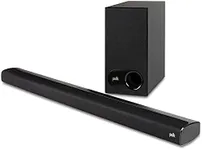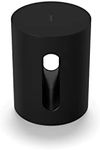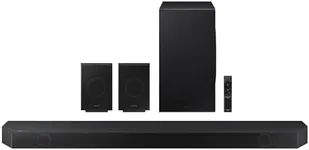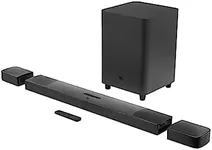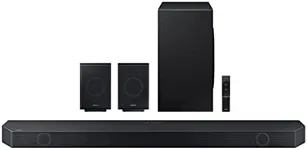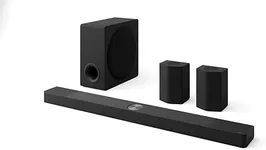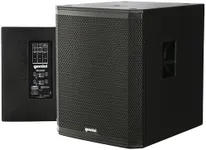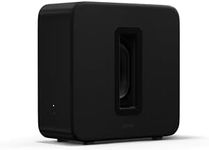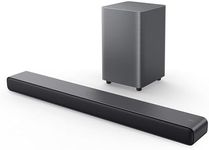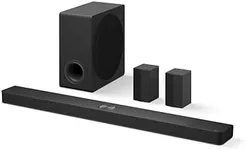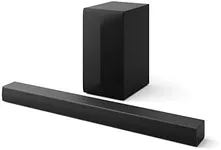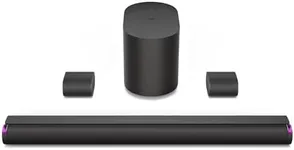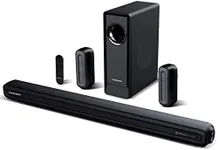Buying Guide for the Best Wireless Subwoofers
When it comes to picking the right wireless subwoofer, it's important to understand the key specifications that will impact your listening experience. A subwoofer is designed to reproduce low-frequency sounds, adding depth and richness to your audio setup. By focusing on the right specs, you can ensure that you choose a subwoofer that meets your needs and enhances your overall sound system.Frequency ResponseFrequency response refers to the range of bass frequencies that the subwoofer can reproduce. This is important because it determines how deep and powerful the bass will sound. A wider frequency response range means the subwoofer can produce both very low and relatively higher bass frequencies. Typically, a good subwoofer will have a frequency response range starting from around 20Hz to 200Hz. If you enjoy deep, rumbling bass, look for a subwoofer with a lower minimum frequency. For general use, a standard range will suffice.
Power Output (Wattage)Power output, measured in watts, indicates how much power the subwoofer can handle and how loud it can get. This is crucial for ensuring that the subwoofer can deliver the desired volume and impact without distortion. Subwoofers with higher wattage can produce louder and more powerful bass. For small to medium-sized rooms, a subwoofer with 100-300 watts is usually sufficient. For larger spaces or if you prefer very loud bass, consider a subwoofer with 300 watts or more.
Driver SizeThe driver size refers to the diameter of the subwoofer's speaker cone, usually measured in inches. This affects the subwoofer's ability to move air and produce bass. Larger drivers (10-15 inches) can produce deeper and more powerful bass, while smaller drivers (6-8 inches) are more compact and can fit into smaller spaces. Choose a driver size based on your room size and bass preference. Larger rooms or those seeking more impactful bass should opt for larger drivers.
Connectivity OptionsConnectivity options determine how the subwoofer connects to your audio system. Wireless subwoofers typically use Bluetooth or Wi-Fi to connect, offering flexibility in placement without the need for cables. Some models also include wired options for added versatility. Ensure that the subwoofer is compatible with your existing audio equipment and that it offers the connectivity options you prefer. If you value ease of setup and placement flexibility, prioritize wireless connectivity.
Placement FlexibilityPlacement flexibility refers to how easily you can position the subwoofer in your room. Wireless subwoofers offer more flexibility since they don't require a direct connection to the audio source. This allows you to place the subwoofer in the optimal position for the best sound quality. Consider the layout of your room and where you can place the subwoofer to achieve the best bass response. If you have limited space or specific placement needs, a wireless subwoofer with good placement flexibility is ideal.
Build Quality and DesignBuild quality and design impact the durability and aesthetic appeal of the subwoofer. A well-built subwoofer will last longer and perform better over time. Look for subwoofers made from high-quality materials with a solid construction. Additionally, consider the design and how it fits with your home decor. A subwoofer that looks good and is built to last will enhance both your audio experience and your living space.
